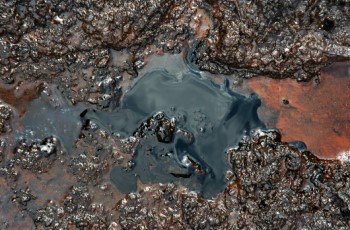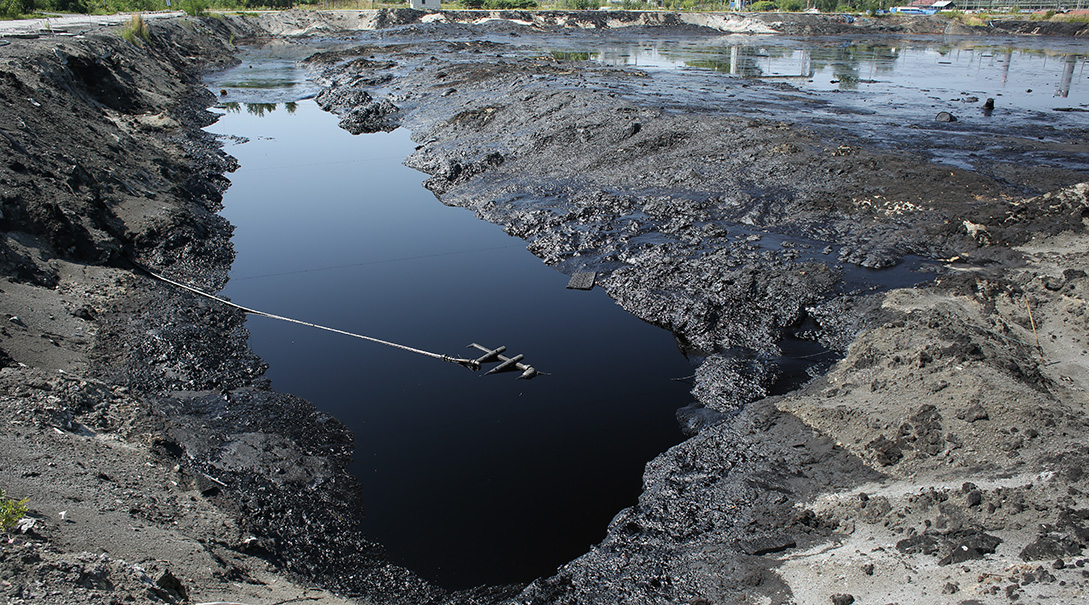Environmental remediation is the process of restoring contaminated soil, groundwater, surface water, air, and other types of environmental media to state and federal regulatory standards set to protect human health and the environment. When human activity contaminates natural resources with pollutants, it can be dangerous to humans, animals, and the environment.
Petroleum-contaminated soil remediation becomes necessary whenever the soil on or surrounding a piece of land where petroleum products are used, stored, and/or transported becomes concentrated with released petroleum products exceeding regulatory standards for health and safety. Whether you’re developing a new site, improving an existing facility, or operating a facility involving petroleum products, you may encounter situations that require remediation of petroleum-contaminated soils
Compliance with State and Federal regulatory standards is crucial to avoiding risks to human health and safety and costly consequences. Alpha-Omega Training and Compliance, Inc. (AOTC) helps its clients understand these risks and how to avoid, mitigate, and remediate them.
Table of Contents
What is Petroleum-contaminated Soil?
Qualifying petroleum products commonly include the following substances:
- Gasoline
- Diesel fuel
- Kerosene
- Jet fuel
- Motor oil
- Hydraulic fluid
- Used oil
When a release of these substances occurs to the soil at a volume that causes an exceedance of State and/or Federal regulatory standards, it is then considered to be contaminated. At that point, the landowner or other identified responsible party has a legal obligation to resolve the issue.
Testing Soil for Petroleum Contamination
There are several valid soil testing methodologies to determine the presence and extent of any petroleum contamination in the soil at your facility. From initial observations to analytical testing, the steps to identifying and treating contamination are as follows:
Use your senses
As a first-level qualitative test, you can use your eyes and nose to determine whether additional testing might be needed. When soil becomes contaminated by petroleum products, you can often see it on the ground as staining and smell it in the air.
If a release of petroleum product can be seen or smelled, then additional testing of the soil using quantitative methods is certainly necessary. However, even smaller concentrations of petroleum product at levels not necessarily perceivable by sight and smell can result in soil contamination, such as a slow leak in an Underground Storage Tank (UST) at an active or former gas station.
Hire a professional
Ultimately, the best strategy for understanding the extent of any potential petroleum contamination problems is to contact an environmental professional with the skills and training to adequately apply quantitative testing methods such as:
- Soil vapor analysis
- Collection of soil samples
- Laboratory analysis
- Delineation of the extent of contamination
AOTC’s staff of highly qualified and experienced environmental professionals can conduct comprehensive testing of your soil to identify any issues which may need to be addressed.
Remediation of Petroleum-contaminated Soil

AOTC uses a variety of soil remediation approaches for petroleum contamination, including:
Dredging/Excavation
The simplest and often least expensive soil remediation technique is dredging and/or excavating. This technique involves removing the contaminated soil and replacing it with uncontaminated fill sand or other similar media. The excavated contaminated soil is then transported to a landfill or other facility for the appropriate treatment and disposal based on the waste characteristics of the soil.
In some situations, it may be more economically feasible or desirable in terms of risk management to remove the contaminated material and treat it using aeration, biostimulation, or bioaugmentation. The answer depends on your unique project goals, budget, and site-specific requirements.
Soil Vapor Extraction/Multi-phase extraction
Soil vapor extraction or multi-phase extraction method involves volatilizing organic compounds from the soil by pumping air into the contaminated soil, providing adequate pore space within the sediment, and extracting the vapors produced with a vacuum system often called an SVE system. This type of remediation system is commonly seen as a small enclosed trailer parked in the back or on the side of a gas station, as SVE remediation is cost-effective and efficient for treating moderate levels of petroleum contamination in soils typical of these facilities.
Solidification/Stabilization
Methods for reducing or stopping the spread of contamination in soils, known as Solidification/Stabilization, require the introduction of a reagent. Solidifying or stabilizing agents are injected into contaminated soils to trap contaminants in a solid block (solidification) or to prevent soil contamination from leaching into the groundwater and spreading (stabilization).
Bioremediation
Introducing microorganisms or fostering the development of other microbial processes in soil, to degrade hydrocarbons from petroleum contamination to other non-hazardous byproducts is called Bioremediation. Bioaugmentation is the process of supporting the growth of microorganisms already present in the native soil, which consume and degrade contaminants. This technique is minimally invasive, involves little to no excavation or other physical disturbance to the land, and can be a reasonably affordable solution
How Much Does Petroleum-contaminated Soil Remediation Cost?
Petroleum-contaminated soil remediation costs depend on the nature and extent of the contamination as well as other site-specific factors such as usage, topography, and hydrogeology. Research from the EPA shows that the average cost for this service in the United States is about $197,735.
Although spending nearly $200,000 for soil remediation may sound like a lot of money, it could save you much more in the long run. The EPA and state regulatory agencies such as The Florida Department of Environmental Protection (FDEP) have the power to fine individuals and incorporated responsible parties who are found to be out of compliance with environmental regulations due to soil contamination. Failure to maintain compliance could incur daily fines of up to $50,000 per day! It is crucial to take action immediately to resolve contamination issues as soon as they are identified to avoid detrimental consequences to health, safety, business, and financial prosperity.
Get the soil remediation that you need from AOTC
AOTC works with our clients to design and implement site-specific and tailored remediation strategies for petroleum-contaminated soil. We’ve helped major corporations with petroleum contamination issues, such as Mitsubishi Power and Lockheed Martin.
AOTC is capable of providing:
- Contamination assessments
- Remedial investigation
- Land pre-development assessments
- Excavation
- Hazardous and non-hazardous waste transportation
- Emergency spill response
- Land audits
- Consulting
- And more
You can rely on AOTC to alleviate your facility’s petroleum hydrocarbon soil contamination issues in the quickest, most cost-efficient, and most effective manner possible.
Get in touch with us today to learn more about how we can help.
